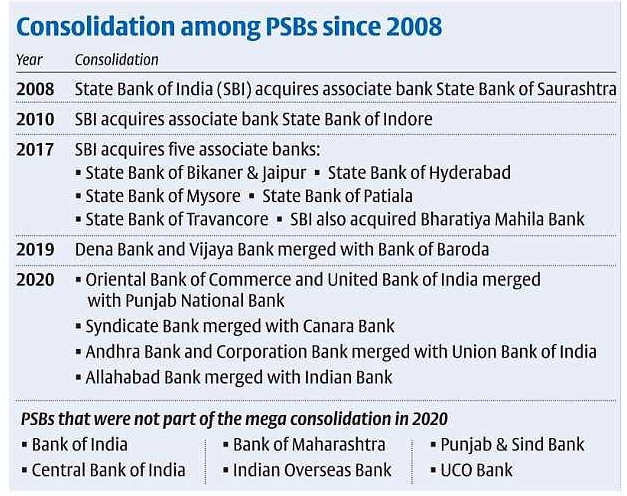Two public sector banks (PSBs) in India’s financial services sector firmament may come a full circle if the government makes good on the Budget announcement of privatization.
Why full circle? Because prior to their nationalization, which happened in two phases – in 1969 (14 banks) and 1980 (6 banks) – all PSBs were private sector banks.

Since the Budget announcement on February 1, various viewpoints have emerged as to which two PSBs could be picked up for privatisation.
Some experts say the six PSBs that were left out of last year’s mega-consolidation exercise could be on the government’s radar for privatization.
Others opine it could be two of the five large PSBs into which eight mid-sized PSBs merged in the last two years.
There could also be another dimension – the government may choose a combination of the aforementioned two possibilities.
Though Debashish Panda, Secretary, Department of Financial Services, has said that all PSBs are eligible for privatization, in all likelihood, State Bank of India (SBI) will be kept out of this exercise as it the only government-owned bank that is classified as a domestic systemically important bank (D-SIB).
The other two D-SIBs – ICICI Bank and HDFC Bank – are private sector banks.
Which PSBs could be privatized?
This is a million-dollar question and there is no clear-cut answer. However, analysts have tried to wrap their head around this question and find answers, as is their wont.
Some analysts posit that the government may leave out the five large PSBs – Bank of Baroda (BoB), Punjab National Bank (PNB), Canara Bank, Union Bank of India (UBI) and Indian Bank – from the privatisation exercise as, post-consolidation, they are currently in the midst of stabilising their operations and have just started to reap the benefit of cost-savings.
Moreover, going by the FM’s statement that India may need 20 banks of the size of SBI, the aforementioned banks are likely to remain in the public sector.
Maybe, a 5-10 per cent disinvestment of government stake could happen in these PSBs a year or two down the line.
Hence, the attention turns to the six PSBs – Bank of India (BoI), Bank of Maharashtra (BoM), Central Bank of India (CBoI), Indian Overseas Bank (IOB), Punjab & Sind Bank, and UCO Bank – which were not part of the mega-consolidation exercise that happened last year.
Why Bank of India is not in list of privatization?
Since BoI is a fairly large PSB with an international presence (global business mix of ₹10,26,866 crore as of December-end 2020), the government may not be keen on privatizing it.
Why UCO Bank is not in list of privatization?
UCO Bank, too, is unlikely to be privatized as two Kolkata-headquartered PSBs have already been amalgamated (United Bank of India with PNB and Allahabad Bank with Indian Bank). So, the Centre may want to retain at least one PSB with its headquarters in East.
Why Punjab & Sind Bank is not in list of privatization?
Since the government infused ₹5,500 crore in Punjab & Sind Bank only two months back, it may hold back on its privatization for a year or two.
So, the shortlist of PSBs that could be eligible for privatization gets whittled down to three – BoM, CBoI and IOB. CBoI and IOB are still under the RBI’s prompt corrective action (PCA).
But they could be brought out of PCA as there are visible signs of improvement in some of the key parameters such as profitability and asset quality (in net NPA terms as they have stepped up provisioning) in the last 3-4 quarters.
BoM stands out as it has posted net profit for eight quarters on the trot after the massive quarterly loss of ₹4,856 crore in December 2018. The Pune-headquartered PSB’s asset quality has shown marked improvement and it has a good RAM (retail, agriculture, MSME) to corporate loan mix of 61: 39.
Source: The Hindu dt 15.02.2021